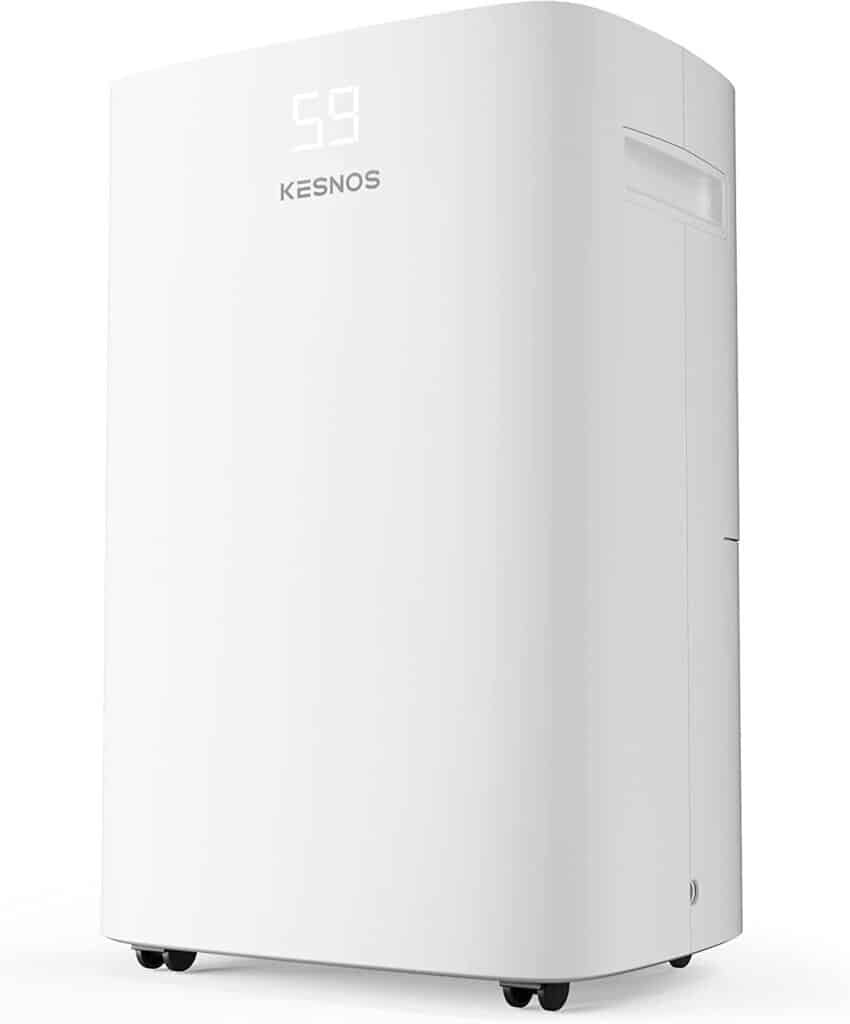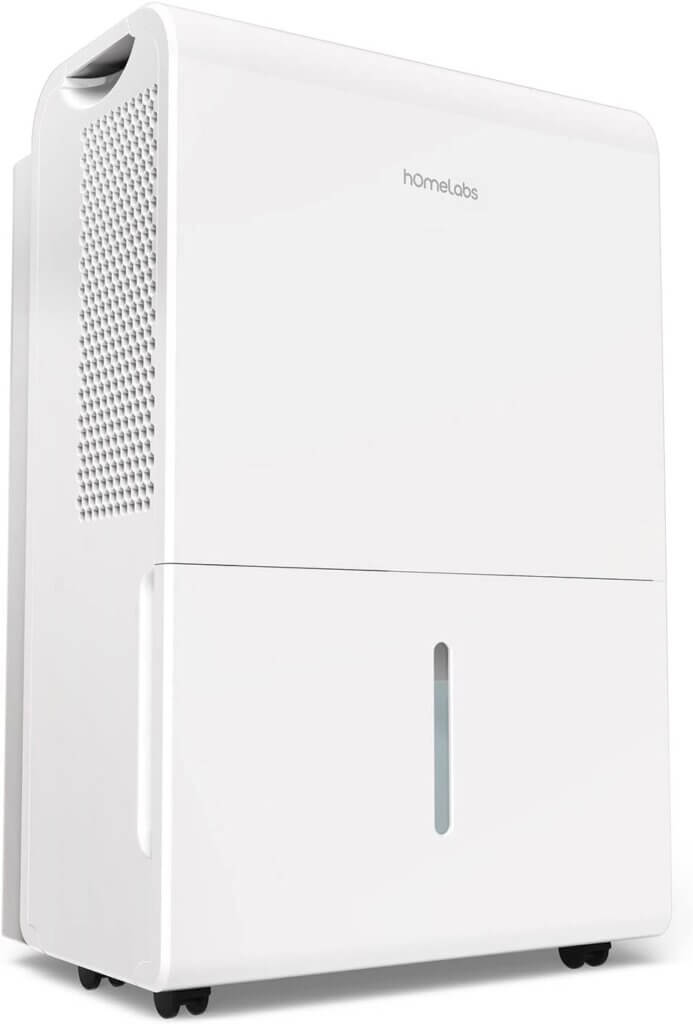Are you tired of dealing with excessive humidity in your basement? Look no further! Low temperature dehumidifier for basement is here to save the day. These innovative devices are tailored to tackle the unique challenges presented by basements, including low temperatures and high moisture levels.

In this article, we will delve into the world of low temperature dehumidifiers for basements and provide a comprehensive review of the top four models available in the market. Say goodbye to dampness and hello to a dry and comfortable basement with the help of these remarkable devices.
Reviewing the four best low temperature dehumidifiers for basements, we will consider their features, performance, and effectiveness in combating excess humidity. Each dehumidifier has been carefully selected based on its ability to operate flawlessly in colder environments, ensuring optimal performance even at low temperatures. By exploring the reviews of these top-rated dehumidifiers, you can make an informed decision and select the ideal solution for your basement’s unique needs.
Contents
Waykar 2500 Sq. Ft. Dehumidifier

The Waykar 2500 Sq. Ft. Dehumidifier is a powerful and efficient solution for basement humidity control. With its large coverage area, it effectively removes excess moisture from spaces up to 2500 square feet. The dehumidifier features a low-temperature operation mode, allowing it to work optimally even in colder environments. It offers user-friendly controls, a built-in humidistat, and a convenient auto-shutoff feature when the water tank reaches capacity.
Kesnos 4500 Sq. Ft. Dehumidifier

The Kesnos 4500 Sq. Ft. Dehumidifier is designed to combat excessive moisture in larger basements. With its impressive coverage area of 4500 square feet, this dehumidifier ensures comprehensive humidity control. It incorporates a low-temperature operation mode, making it suitable for colder environments. The unit is equipped with a user-friendly control panel, a digital display, and a range of convenient features such as auto-defrost and continuous drainage.
hOmeLabs 50 Pint Dehumidifier

The hOmeLabs 50 Pint Dehumidifier is a reliable choice for medium-sized basements. It has a capacity to remove up to 50 pints of moisture per day, effectively controlling humidity in spaces of approximately 2500 square feet. This dehumidifier is equipped with a low-temperature operation mode, allowing it to work efficiently even in colder temperatures. It features easy-to-use electronic controls, a programmable timer, and a built-in pump for continuous drainage.
Ivation 13 Pint Desiccant Dehumidifier

The Ivation 13 Pint Desiccant Dehumidifier offers a different approach to basement dehumidification. It utilizes desiccant technology, which makes it highly effective in low-temperature environments. With its compact size and moisture removal capacity of 13 pints per day, this dehumidifier is suitable for smaller basements or specific areas within larger spaces. It features user-friendly controls, a digital display, and a variety of operating modes for customized humidity control.
Points to Consider Before Purchasing a Low Temperature Dehumidifier for Basement:
- Coverage Area: Determine the size of your basement and choose a dehumidifier with appropriate coverage to ensure efficient moisture control.
- Moisture Removal Capacity: Consider the daily moisture removal capacity of the dehumidifier, as it determines how effectively it can handle the humidity levels in your basement.
- Energy Efficiency: Look for dehumidifiers with energy-saving features, such as programmable timers or auto-shutoff functions, to help reduce energy consumption.
- Noise Level: If the dehumidifier will be placed in a frequently used area, consider models with quieter operation to minimize noise disturbance.
- Additional Features: Check for features like built-in humidistats, digital displays, auto-defrost functions, continuous drainage options, and user-friendly controls, which can enhance convenience and usability.
Conclusion:
In conclusion, installing a dehumidifier in your basement is a smart investment that can greatly enhance the comfort, health, and overall condition of your home. By effectively controlling humidity levels, these devices prevent the growth of mold and mildew, eliminate musty odors, and protect your valuable belongings. Whether you opt for a low temperature dehumidifier specifically designed for basement use or a standard model capable of operating in colder environments, the benefits are undeniable. Take control of your basement’s humidity and create a more livable space by harnessing the power of a dehumidifier. Enjoy the peace of mind that comes with a dry, clean, and healthier basement environment for you and your family.
FAQ about Dehumidifiers for Basement
Q What is the lowest temperature for a dehumidifier?
A The lowest temperature at which most standard dehumidifiers operate effectively is typically around 41 to 45 degrees Fahrenheit (5 to 7 degrees Celsius). However, some dehumidifiers, specifically designed as low-temperature models, can operate efficiently at temperatures as low as 33 degrees Fahrenheit (0.5 degrees Celsius).
Q Do dehumidifiers work at low temperatures?
A Yes, dehumidifiers can work at low temperatures, but their effectiveness may vary. Standard dehumidifiers may experience reduced efficiency and frost buildup on their coils in colder environments. Low-temperature dehumidifiers are specifically designed to address these issues and maintain optimal performance in low-temperature conditions.
Q What is the best dehumidifier for a cold basement?
A The best dehumidifier for a cold basement is a low-temperature dehumidifier specifically designed to operate effectively in low-temperature environments. These dehumidifiers are equipped with features such as auto-defrost functions and specialized compressors to handle colder conditions and prevent frost buildup.
Q Do you run a dehumidifier in the basement in the winter?
A Yes, it is generally recommended to run a dehumidifier in the basement during the winter. While outdoor temperatures may be colder, indoor humidity levels can still be elevated, leading to potential issues like condensation, mold growth, and musty odors. Running a dehumidifier in the basement during winter helps maintain a balanced humidity level and prevents excessive moisture-related problems.
Q What temperature should a dehumidifier be set at in the basement?
A The ideal temperature setting for a dehumidifier in the basement typically ranges between 45 and 50 degrees Fahrenheit (7 to 10 degrees Celsius). This temperature range helps strike a balance between efficient dehumidification and preventing frost buildup on the dehumidifier’s coils.
Q Where is the best place to put a dehumidifier in the basement?
A The best place to position a dehumidifier in the basement is in a central location where it can effectively circulate air throughout the space. It is recommended to place the dehumidifier away from walls or obstacles to allow proper airflow. Additionally, positioning the dehumidifier near a floor drain or utilizing a gravity drain setup can facilitate continuous drainage.
Q Should I run my basement dehumidifier 24/7?
A Running a basement dehumidifier 24/7 is not necessary in most cases. It is generally sufficient to run the dehumidifier during periods when the humidity levels are higher, such as during damp weather or when you notice excessive moisture in the basement. However, if you live in a consistently humid climate or have persistent moisture issues, running the dehumidifier continuously can be beneficial.
Q What is the ideal basement humidity in winter?
A The ideal basement humidity level in winter typically ranges between 30% and 50%. This range helps prevent excessive dryness while minimizing the risk of condensation and mold growth. Maintaining a relative humidity level within this range promotes a comfortable and healthy environment.
Q Should I use a dehumidifier at 40% or 60%?
A The ideal humidity level to set on a dehumidifier depends on the specific needs and conditions of your basement. In general, a humidity setting between 40% and 50% is recommended for most basements to prevent excessive moisture and inhibit mold growth. However, if your basement tends to be excessively damp or experiences ongoing moisture issues, setting the dehumidifier to 60% can be appropriate.
